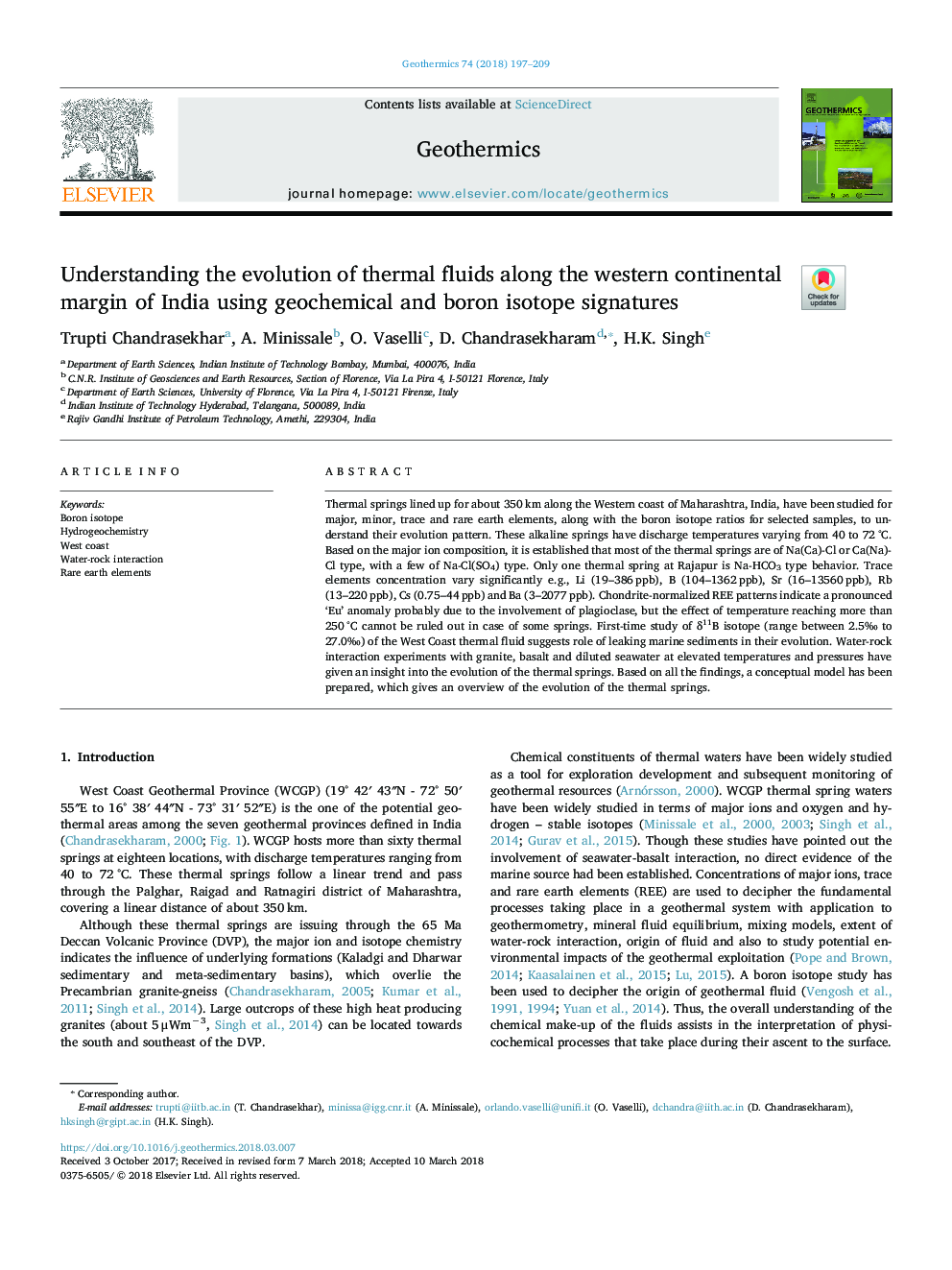| Article ID | Journal | Published Year | Pages | File Type |
|---|---|---|---|---|
| 8088558 | Geothermics | 2018 | 13 Pages |
Abstract
Thermal springs lined up for about 350â¯km along the Western coast of Maharashtra, India, have been studied for major, minor, trace and rare earth elements, along with the boron isotope ratios for selected samples, to understand their evolution pattern. These alkaline springs have discharge temperatures varying from 40 to 72â¯Â°C. Based on the major ion composition, it is established that most of the thermal springs are of Na(Ca)-Cl or Ca(Na)-Cl type, with a few of Na-Cl(SO4) type. Only one thermal spring at Rajapur is Na-HCO3 type behavior. Trace elements concentration vary significantly e.g., Li (19-386â¯ppb), B (104-1362â¯ppb), Sr (16-13560â¯ppb), Rb (13-220â¯ppb), Cs (0.75-44â¯ppb) and Ba (3-2077â¯ppb). Chondrite-normalized REE patterns indicate a pronounced 'Eu' anomaly probably due to the involvement of plagioclase, but the effect of temperature reaching more than 250â¯Â°C cannot be ruled out in case of some springs. First-time study of δ11B isotope (range between 2.5â° to 27.0â°) of the West Coast thermal fluid suggests role of leaking marine sediments in their evolution. Water-rock interaction experiments with granite, basalt and diluted seawater at elevated temperatures and pressures have given an insight into the evolution of the thermal springs. Based on all the findings, a conceptual model has been prepared, which gives an overview of the evolution of the thermal springs.
Related Topics
Physical Sciences and Engineering
Earth and Planetary Sciences
Geochemistry and Petrology
Authors
Trupti Chandrasekhar, A. Minissale, O. Vaselli, D. Chandrasekharam, H.K. Singh,
